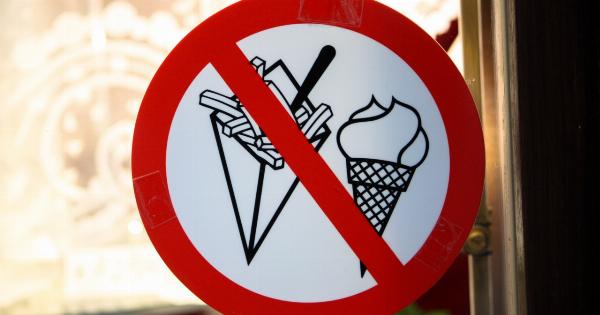Ice cream is a beloved dessert treat for millions of people around the world. Whether you enjoy it in a waffle cone, sundae, or simply straight out of the tub, there’s no denying that ice cream is a delicious treat.
However, beneath the creamy and sweet exterior lies a darker side to this frozen dessert.
High in Calories and Fat
One of the biggest concerns when it comes to ice cream is its high calorie and fat content. A single serving of ice cream can contain upwards of 300 calories and 20 grams of fat.
Consuming too much ice cream on a regular basis can quickly lead to weight gain and negative health consequences such as heart disease and type 2 diabetes.
Added Sugars
The sugar content in ice cream can also be a concern. Most types of ice cream are loaded with added sugars, which can lead to a variety of health problems such as tooth decay, Type 2 diabetes, and obesity.
In addition, some studies have linked high sugar intake to an increased risk of certain cancers, including pancreatic cancer.
Artificial Flavors and Colors
Many types of ice cream contain artificial flavors and colors. These additives are used to enhance the flavor and appearance of ice cream, but they have been linked to a variety of negative health effects.
For example, artificial flavors like vanillin have been shown to have negative effects on the neurological system, while certain food coloring additives have been linked to hyperactivity in children.
Contaminants and Bacteria
Another potential concern when it comes to ice cream is contamination and bacterial growth. Ice cream is a perishable item, and if it is not stored properly or handled correctly, it can quickly become contaminated with harmful bacteria like listeria.
In fact, there have been many recalls of ice cream products in recent years due to concerns over contamination.
Allergies and Intolerances
Ice cream can also be problematic for individuals with allergies and intolerances. Many types of ice cream contain common allergens such as nuts and dairy, which can cause severe reactions in some individuals.
In addition, some people may be lactose intolerant and unable to digest dairy products, which can lead to bloating, gas, and other digestive issues.
Environmental Impact
Finally, the production and distribution of ice cream can have a negative impact on the environment.
The dairy industry is a major contributor to greenhouse gas emissions, and the energy used to keep ice cream production and storage facilities running can also have a significant carbon footprint. Additionally, the packaging and transportation of ice cream can lead to waste and pollution.
Conclusion
While ice cream is certainly a delicious treat, it’s important to be aware of the potential negative health and environmental consequences that come with consuming this popular dessert.
By enjoying ice cream in moderation and opting for healthier, more sustainably produced options when possible, we can all do our part to mitigate these risks.





























